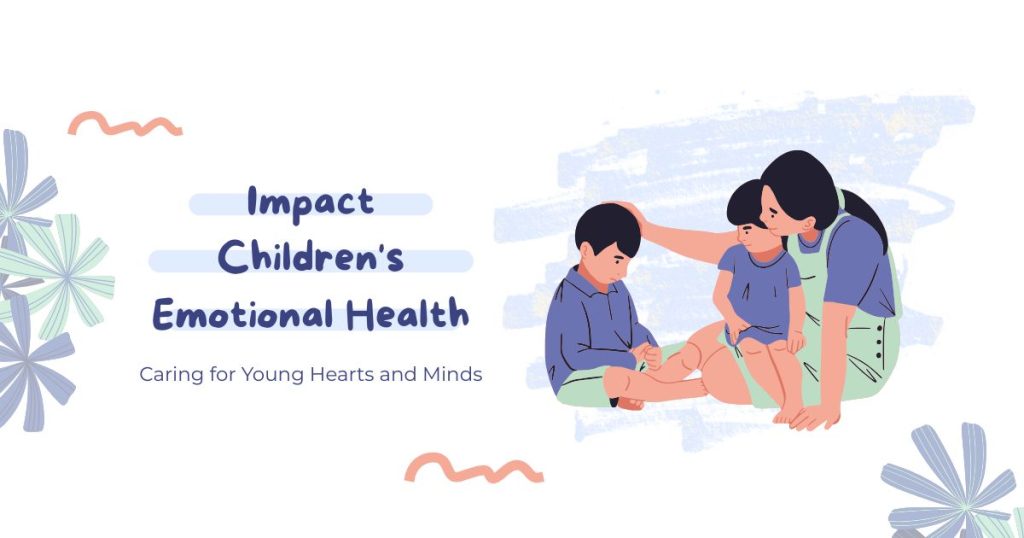How Does Marketing Impact Children’s Emotional Health?

Marketing saturates our world, from TV screens to social media feeds. And while adults might have the skills to critically process advertisements, children are often too young to grasp their intent. This makes children particularly susceptible to marketing messages that can affect not only their choices but also their emotional and mental health.
How your child thinks and reacts to marketing is ultimately a result of how parents, educators, and child psychologists raised the child. This blog discusses the omnipresence of marketing in the lives of children, its emotional impact, and some actionable steps we can take to achieve healthier outcomes.
The Pervasiveness of Marketing in Children’s Lives
Marketing has gotten smarter and more pervasive than ever. Children are exposed to advertisements through multiple channels, including:
- Television: Traditional commercials are still a major marketing avenue targeting kids with animated characters and jingles.
- Social Media & Influencers: Platforms like YouTube, TikTok, and Instagram are rampant with influencer partnerships promoting products such as toys, candies, and games.
- Apps & Games: From subtle in-app purchases to branded characters in video games, marketing often blends seamlessly with entertainment.
- Schools & Events: Sponsored activities or branded giveaways during school events bring marketing directly into the classroom.
A 2019 report by Common Sense Media found that kids aged 8 to 12 spend an average of about 5 hours a day consuming digital media. That’s plenty of time for advertisers to leave a lasting impression.

The Emotional Impact of Marketing on Children
Marketing messages often go beyond just promoting products; they target emotions, desires, and perceptions. Here’s how they can affect children’s emotional health:

1. Anxiety and Pressure to Conform
Marketing generally idealizes life, whether it be trends, looks, food, or lifestyles, often setting unattainable beauty standards. Kids may feel the need to “belong” by having the newest device or by wearing branded clothing. This may cause anxiety and feelings of inadequacy when they do not meet these standards.
2. Low Self-Esteem
Like adults, children are inundated with images of “perfection” in ads. For example, if children see images of models that have been airbrushed too much or are encouraged to think that they’re only worthy of affection or acceptance when they win or do well, it can damage a child’s self-worth.” Comparisons to idealized embodiments—whether among peers or popular influences—may foster perceptions of unworthiness instead.
3. Materialism
For instance, marketing narratives frequently ascribe happiness or success to building with material objects. Ads often convey the underlying message that “Owning this product makes you popular” or “having this makes you better.” Over time, this breed of materialism, in which children measure their value and happiness by things they have, not by qualities they possess, such as kindness, creativity or work ethic.
4. Short-term Gratification
From not-so-stealthy in-app purchases to clickbait-y ads, marketing promotes immediate satisfaction. This mentality can really hinder kids from learning patience, delayed gratification, and making mindful decisions.
Insights from Child Psychology
Child psychologists note that children process marketing messages differently from adults. Here are some key insights:
- Limited Cognitive Abilities:
Younger children (under the age of 8) generally fail to recognize the persuasive intent behind ads. Instead, they view advertisements as entertaining or informative.
- Memory Retention:
Research has shown children often retain emotionally charged ads better than factual ones, underscoring the importance of framing in advertising.
- Developmental Stages:
Adolescents are particularly vulnerable to ads focusing on image, popularity, or independence, as these resonate strongly with their developmental need for identity and belonging.
By understanding how marketing shapes their minds, adults can better guide children away from emotional pitfalls.
Practical Tips for Parents
Parents are the first line of defense when it comes to safeguarding kids from marketing’s negative effects. Here’s how you can help:
- Encourage Media Literacy
Teach your children how advertising works. Show them examples of ads and explain their intent—for instance, to sell a product by making it look more desirable. Empower them to question what they see.
- Set Screen Time Boundaries
Limit exposure to social media and other channels saturated with ads. This not only protects children from excessive marketing but also encourages more meaningful activities like reading or outdoor play.
- Focus on Experiences Over Things
Encourage children to find joy in experiences rather than possessions. Family game nights or nature walks can instill values that counteract materialism.
- Be a Role Model
Children learn by observing. If you avoid excessive consumerism and practice mindful buying, they’re more likely to do the same.
- Have Honest Conversations
Talk to your kids about their feelings when they express a desire for the newest toy or gadget. Are they feeling left out because their friends own it? Understanding their emotions helps you address the issue compassionately.
The Role of Educators in Building Awareness
Schools can play a significant role in helping children develop critical thinking skills about marketing. Here’s how educators can contribute:

Teach Media Literacy in Classrooms
Media literacy lessons can equip kids with techniques to analyze advertisements. They learn to differentiate between factual information and manipulation techniques used in marketing.
Discuss Brand Influence
Hold discussions with students about the effect of certain brands on their behavior or identity. For example, why are some jeans pricier than others, and does that mean they’re “better”?
Encourage Creativity Over Consumerism
Set up art, crafts, or writing exercises where children imagine alternative realities, such as a world where happiness isn’t tied to material possessions.
Education helps dismantle the power of marketing and fosters independence in decision-making.
Take Steps Towards Better Emotional Health
Marketing is an inescapable element of modern life, but its influence doesn’t have to be all bad. Parents, educators and psychologists can help children avoid the traps of consumerism by being proactive and providing them with the tools to use emotionally.
Begin by being more conscious of your child’s exposure. Tap into their youth, talk to them, and equip them with the skills to critically analyze the media they consume. Together, we can build a better tomorrow for your children to grow up happy, confident, and educated.
If you think this article might help someone else, pass it along to a fellow parent, educator, or anyone seeking to improve children’s emotional health. Word of mouth spreads quicker than any advertisement.





